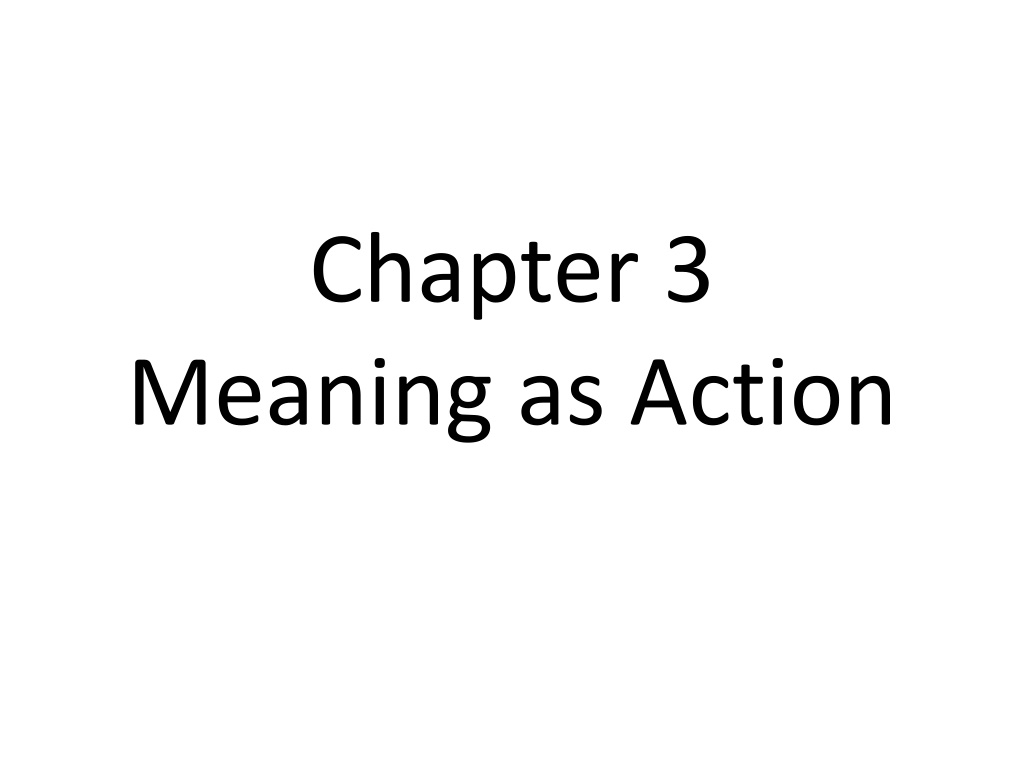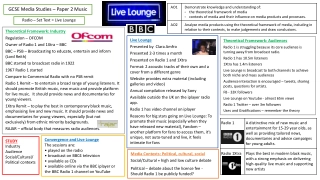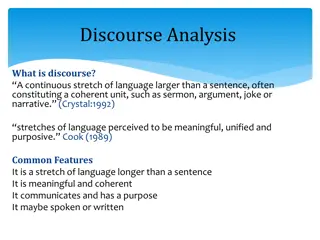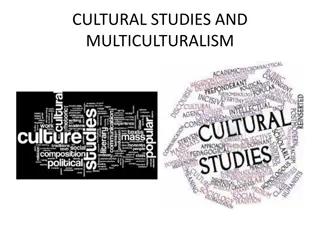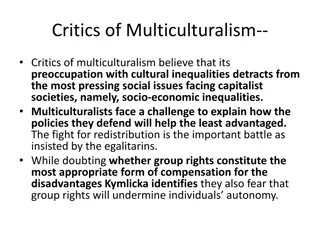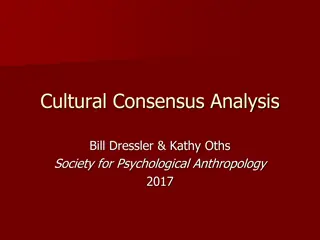Understanding Meaning in Cultural Contexts through Action
Explore the importance of context in understanding meaning in different cultures and situations, focusing on structures of expectation, frames, contextualization cues, situated inferences, pragmatic coherence, and the cooperative principle in communication. Gain insights into how language users interpret signs, behaviors, and verbal cues within their social and cultural contexts to make communication meaningful and effective.
Download Presentation

Please find below an Image/Link to download the presentation.
The content on the website is provided AS IS for your information and personal use only. It may not be sold, licensed, or shared on other websites without obtaining consent from the author. Download presentation by click this link. If you encounter any issues during the download, it is possible that the publisher has removed the file from their server.
E N D
Presentation Transcript
Chapter 3 Meaning as Action
Context of Situation: e.g. Trobriand island natives in order to understand meaning, we must know the ( what , why , and how ) Context of Culture: Economics Social organization Concepts of time and space
Structures of expectation: Blueprints for action (e.g. speech acts/ second nature) We interpret signs + expect certain behavior Cultural differences in these expectations e.g. French/ American greetings Ppl organize background knowledge about the world/ use them to predict interpretation
Frames or Schema: The general structures of expectations established in ppl s minds by the culture they live in. Clip # 14
Contextualization cues Words ppl exchange are linked to situational & cultural context in which they occur. Example I need to get in there, can you open the door? Verbal + para-verbal + non-verbal = interpretation Called contextualization cues
Situated inferences: Cues help listener make relevant situated inferences ( the process of arriving to a conclusion/ interpretation through the interaction of cultural background knowledge + social expectations) Clip # 15 (Ladder of inferences/show 1st5 mn.)
Pragmatic Coherence Semantic Cohesion + shared cultural background = Pragmatic Coherence e.g. Swimming boy Language users make efforts to make words uttered meaningful within the social & cultural context of the exchange. (examples see book)
Cooperative Principle Paul Grice s four maxims of the co-operative principle in conversation: 1- Quality (truth) 2- Quantity (economical) 3- Relation (relevance) 4- Matter (clear/orderly)
